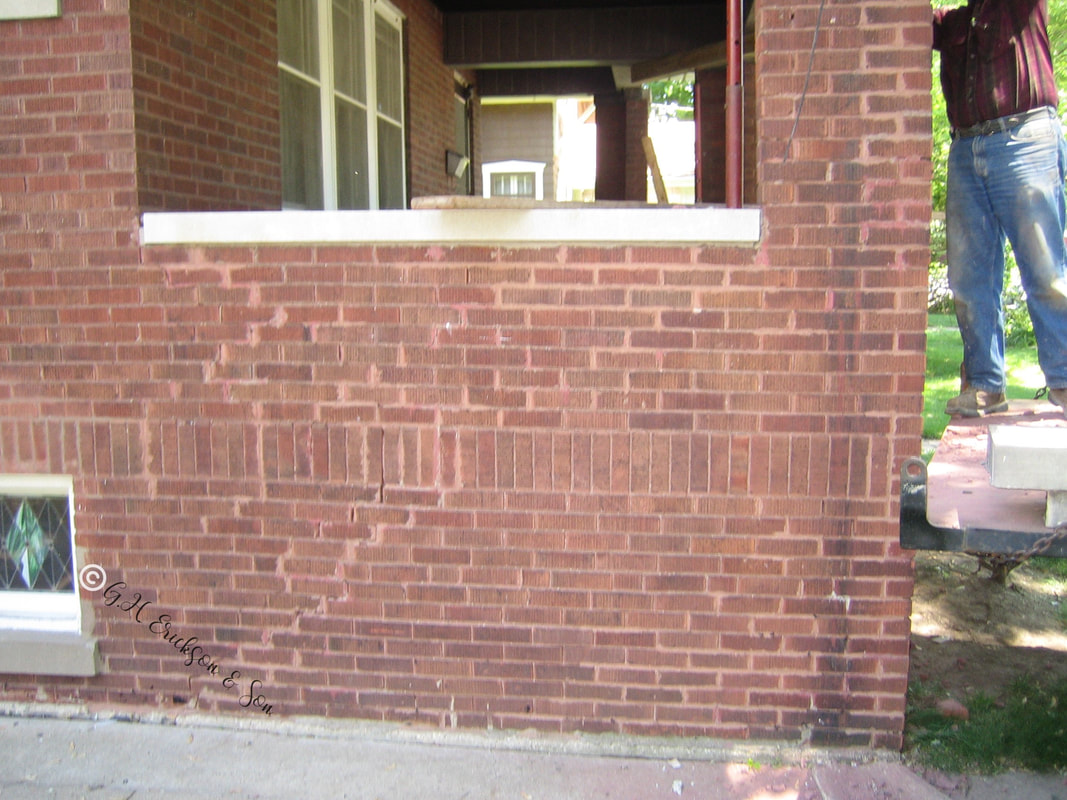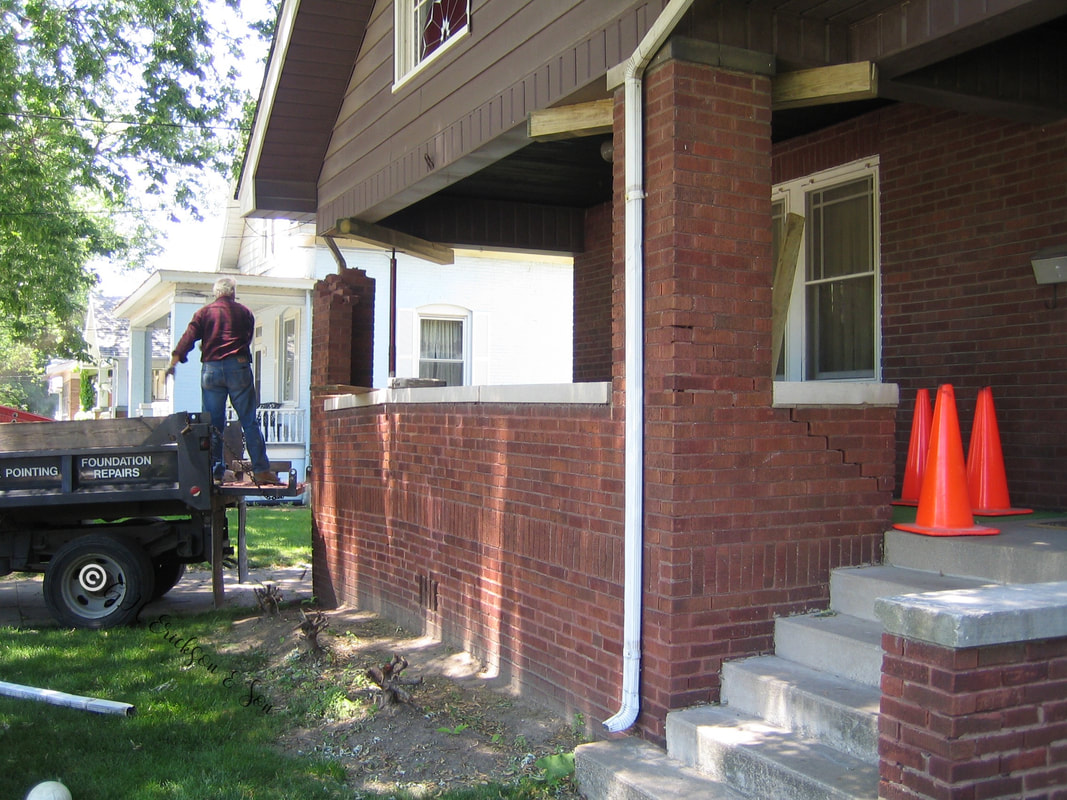Best Mortar For Tuckpointing
First, understanding what Tuckpointing is. Tuckpointing is a technique used in masonry to improve the structural integrity and aesthetics of a brick structure. It's a process that involves the removal of deteriorated mortar from the joints of a brick structure, and then the replacement of it with fresh mortar. This practice not only enhances the visual appeal of a brick structure but also extends its lifespan by combating the damaging effects of weathering and decay.
The term 'tuckpointing' was derived from the process of tucking or inserting mortar into the damaged joints using a tool known as a 'tuck pointer'. Although this method has been used for centuries, modern advancements in tools and materials have further refined the process, making it more efficient and effective.
In the world of masonry, tuckpointing is considered a 'preservation' technique, designed to maintain and restore the original appearance of brick structures. It's an invaluable method for homeowners and property managers, especially those dealing with older buildings where the mortar has begun to deteriorate or fail. What is the importance of mortar in tuckpointing?
The role of mortar in tuckpointing cannot be overstated. Mortar is the bonding agent that holds the bricks together, providing structural integrity to the entire building. In tuckpointing, mortar does more than just bond bricks; it provides a waterproof barrier that prevents water from seeping into the brickwork and causing structural damage.
However, over time, the effects of weathering and decay can cause the mortar to crack or crumble, undermining the stability of the brickwork. That's where tuckpointing comes in. By replacing the damaged mortar with fresh material, tuckpointing preserves the integrity of the brickwork, extending its lifespan and maintaining its aesthetic appeal. But it's not just any mortar that can be used for tuckpointing. The selection of the right type of mortar is crucial to the success of the tuckpointing process. The best mortar for tuckpointing is one that matches the existing mortar in terms of color, composition, and texture. A mismatch can lead to visual inconsistencies and could potentially cause structural problems. How to do Tuckpointing
Tuckpointing is a meticulous process that requires a certain level of expertise. However, with the right tools and materials, even a novice can achieve satisfactory results. The first step in the tuckpointing process is inspecting the brickwork to identify areas where the mortar has begun to deteriorate. This typically involves looking for signs of cracking or crumbling.
Once the damaged areas have been identified, the next step is to remove the old mortar. This is done using a angle grinder or a chisel and hammer, depending on the extent of the damage. Care should be taken to avoid damaging the bricks during this process. After the old mortar has been removed, the joints are then cleaned and wetted in preparation for the new mortar. The new mortar - preferably the best mortar for tuckpointing - is then applied to the joints using a tuck pointer. The mortar should be packed firmly into the joints to ensure a tight seal. Best Mortar for Tuckpointing
Choosing the best mortar for tuckpointing is crucial to the success of the process. The best mortar for tuckpointing is usually one that closely matches the existing mortar in terms of composition, color, and texture. A mismatch in any of these aspects can result in visual inconsistencies and potential structural problems.
In terms of composition, the mortar should have the right mix of sand, cement, and lime. The sand provides bulk and strength to the mortar, the cement provides durability, and the lime enhances the workability and flexibility of the mortar. When it comes to color, the mortar should match the color of the existing mortar as closely as possible. This ensures a uniform appearance once the tuckpointing process is complete. The texture of the mortar is also important. The mortar should have a similar texture to the existing mortar to ensure a seamless blend. Factors to consider when choosing the best mortar for tuckpointing
When choosing the best mortar for tuckpointing, there are several factors to consider. These include the age and type of the brickwork, the climate, and the desired appearance.
The age and type of the brickwork can influence the type of mortar that is suitable for tuckpointing. Older brickwork, for example, may require a softer mortar, while modern brickwork may require a harder, more durable mortar. There are two main types of mortar mix, they are N type and S type. What defines the difference in the mix is the ratio of portland, lime, and sand. Here is a example: Type N has 1 part portland, 1 part lime, and 6 part sand Type S has 1 part portland, 1/2 part lime, and 4 1/2 part sand The climate is also a factor to consider. Mortar that is suitable for a dry climate may not be suitable for a damp climate, and vice versa. The mortar should be able to withstand the prevailing weather conditions to ensure the longevity of the brickwork. The desired appearance is another important consideration. The mortar should match the existing mortar in terms of color and texture to ensure a seamless and attractive finish. If you would like to learn more about mortar, Wikipedia has additional information about mortar. Steps to achieve optimal results in tuckpointing
To achieve optimal results in tuckpointing, the process needs to be conducted with care and precision. Here are some steps to follow:
Tuckpointing: Common mistakes and how to avoid them
While tuckpointing can be a rewarding process, there are several common mistakes that can undermine the results. One such mistake is failing to properly match the new mortar to the existing mortar. This can lead to visual inconsistencies and potential structural problems.
Another common mistake is failing to properly clean and wet the joints before applying the new mortar. This can result in a weak bond between the mortar and the bricks, undermining the integrity of the brickwork. To avoid these and other mistakes, always take the time to properly prepare the brickwork and choose the right type of mortar. Also, make sure to follow the correct tuckpointing process and use the right tools. Advanced tuckpointing techniques
While the basic tuckpointing process is relatively straightforward, there are several advanced techniques that can enhance the results. These include the use of colorants to match the new mortar to the existing mortar, the use of specialized tools to achieve a particular finish, and the application of a protective sealant to prolong the life of the mortar.
Colorants can be used to match the new mortar to the existing mortar in terms of color. This ensures a uniform appearance and enhances the aesthetic appeal of the brickwork. Specialized tools can be used to achieve a particular finish. For instance, a concave jointer can be used to create a concave finish, while a v-jointer can be used to create a v-shaped finish. A protective sealant can be applied to the mortar to protect it from the effects of weathering and decay. This can prolong the life of the mortar and enhance the longevity of the brickwork. Professional tuckpointing services
While tuckpointing can be a DIY project, hiring a professional tuckpointing service can ensure the best results. Professional tuckpointers have the experience and expertise to handle any tuckpointing project, big or small. They also have access to specialized tools and materials that can enhance the results.
Professional tuckpointing services also provide a warranty for their work, giving you peace of mind knowing that the job has been done right. They also adhere to safety standards, ensuring that the tuckpointing process is conducted in a safe and efficient manner. If you're considering tuckpointing for your brickwork, consider hiring a professional tuckpointing service. They can provide you with a free quote and guide you through the entire process, from choosing the best mortar for tuckpointing to applying the final touches. Conclusion
Tuckpointing is an invaluable technique in masonry that can restore the structural integrity and aesthetic appeal of brickwork. The success of the tuckpointing process largely depends on the selection of the best mortar for tuckpointing, which should match the existing mortar in terms of color, composition, and texture.
While tuckpointing can be a DIY project, hiring a professional tuckpointing service can ensure optimal results. They have the experience, expertise, and tools to handle any tuckpointing project, ensuring that your brickwork is not only visually appealing, but also structurally sound.
0 Comments
Leave a Reply. |
We Would Love to hear from you!
|
Service area:
|
Telephone(309) 678-6097
© 2005 - 2023 G.H. Erickson & Son. All Rights Reserved Address 1700 W Marigold Dr Peoria, IL 61615 Designed by: jaytweb.com |



